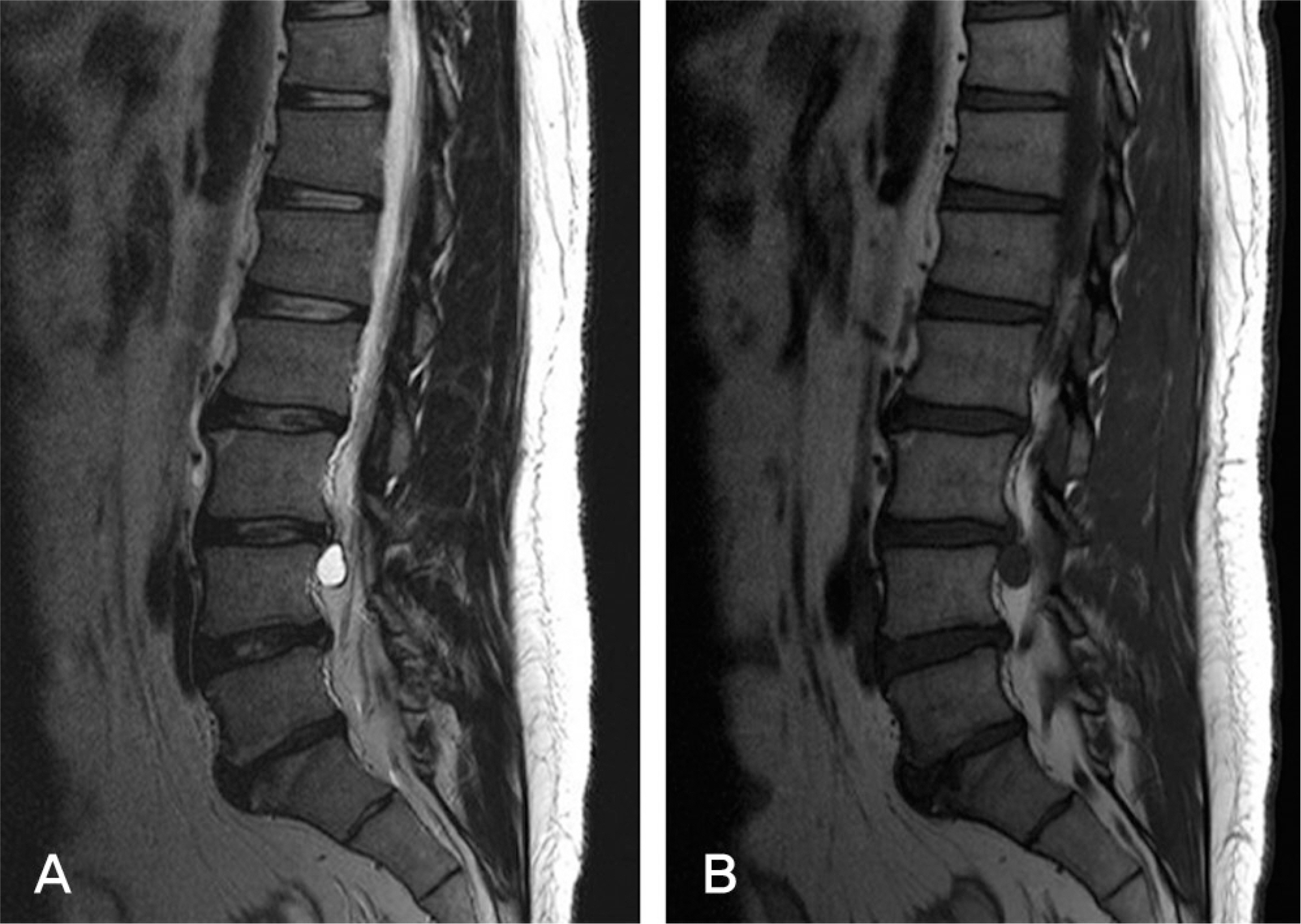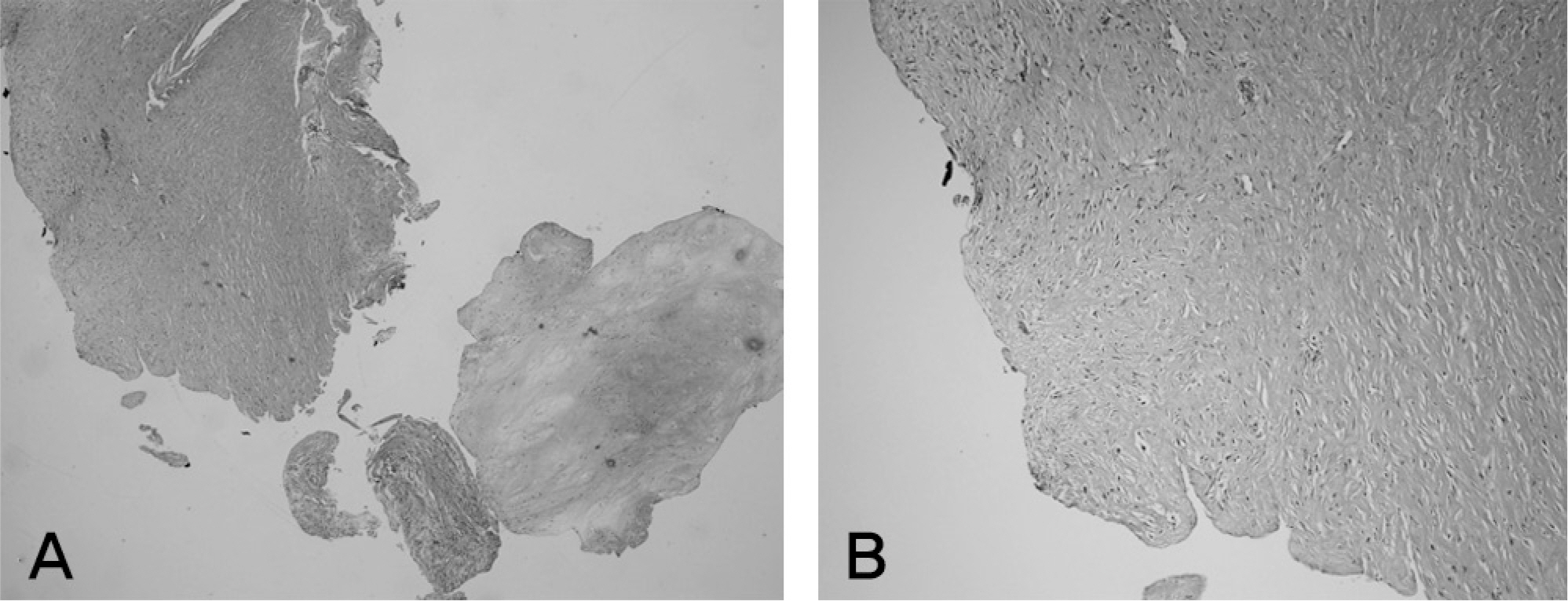J Korean Soc Spine Surg.
2010 Sep;17(3):154-156. 10.4184/jkss.2010.17.3.154.
Discal Cyst of Lumbar Spine: A Case Report
- Affiliations
-
- 1Department of Orthopedic Surgery, Ulsan University Hospital, Ulsan University College of Medicine, Ulsan, Korea. jrcha@uuh.ulsan.kr
- KMID: 1459281
- DOI: http://doi.org/10.4184/jkss.2010.17.3.154
Abstract
- STUDY DESIGN: This is a case report.
OBJECTIVE
We present here a patient who had a discal cyst of the lumbar spine along with neurological symptoms. SUMMARY OF THE LITERATURE REVIEW: Discal cysts are intraspinal cysts that communicate with an adjacent intervertebral disc, and these are rare lesions that can cause lumbar radiculopathy. Because they are very rare, their natural history and the details of the therapeutic guidelines for the treatment of these cysts are still unknown. MATERIAL AND METHODS: The patient complained of moderate lumbar pain and right lower extremity radiculopathy and he was administered conservative treatment for 5 months. But the radiculopathy became aggravated and he then underwent a hemilaminectomy, cyst decompression and discectomy.
RESULTS
The radiculopathy disappeared and any signs of recurrence were not found on the follow up performed at 1 year.
CONCLUSION
Discal cyst is rare, but it can be treated successfully.
Keyword
MeSH Terms
Figure
Reference
-
1.Kono K., Nakamura H., Inoue Y., Okamura T., Shakudo M., Yamada R. Intraspinal extradural cysts communicating with adjacent herniated disks: imaging characteristics and possible pathogenesis. AJNR Am J Neuroradiol. 1999. 20:1373–7.2.Jeon CH., Kim DJ., Kim DJ., Lee HM., Park HJ. Cross-cultural adaptation of the korean version of the Oswestry Disability Index (ODI). J Korean Soc Spine Surg. 2005. 12:146–52.
Article3.Chiba K., Toyama Y., Matsumoto M., Maruiwa H., Watanabe M., Nishizawa T. Intraspinal cyst communicating with the intervertebral disc in the lumbar spine: discal cyst. Spine. 2001. 26:2112–8.4.Tokunaga M., Aizawa T., Hyodo H., Sasaki H., Tanaka Y., Sato T. Lumbar discal cyst followed by intervertebral disc herniation: MRI findings of two cases. J Orthop Sci. 2006. 11:81–4.
Article5.Murata K., Ikenaga M., Tanaka C., Kanoe H., Okuaaira S. Discal cysts of the lumbar spine: a case report. J Orthop Surg(Hong Kong). 2007. 15:376–9.
Article6.Lee HK., Lee DH., Choi CG, et al. Discal cyst of the lumbar spine: MR imaging features. Clin Imaging. 2006. 30:326–30.
Article7.Chou D., Smith JS., Chin CT. Spontaneous regression of a discal cyst. Case report. J Neurosurg Spine. 2007. 6:81–4.



